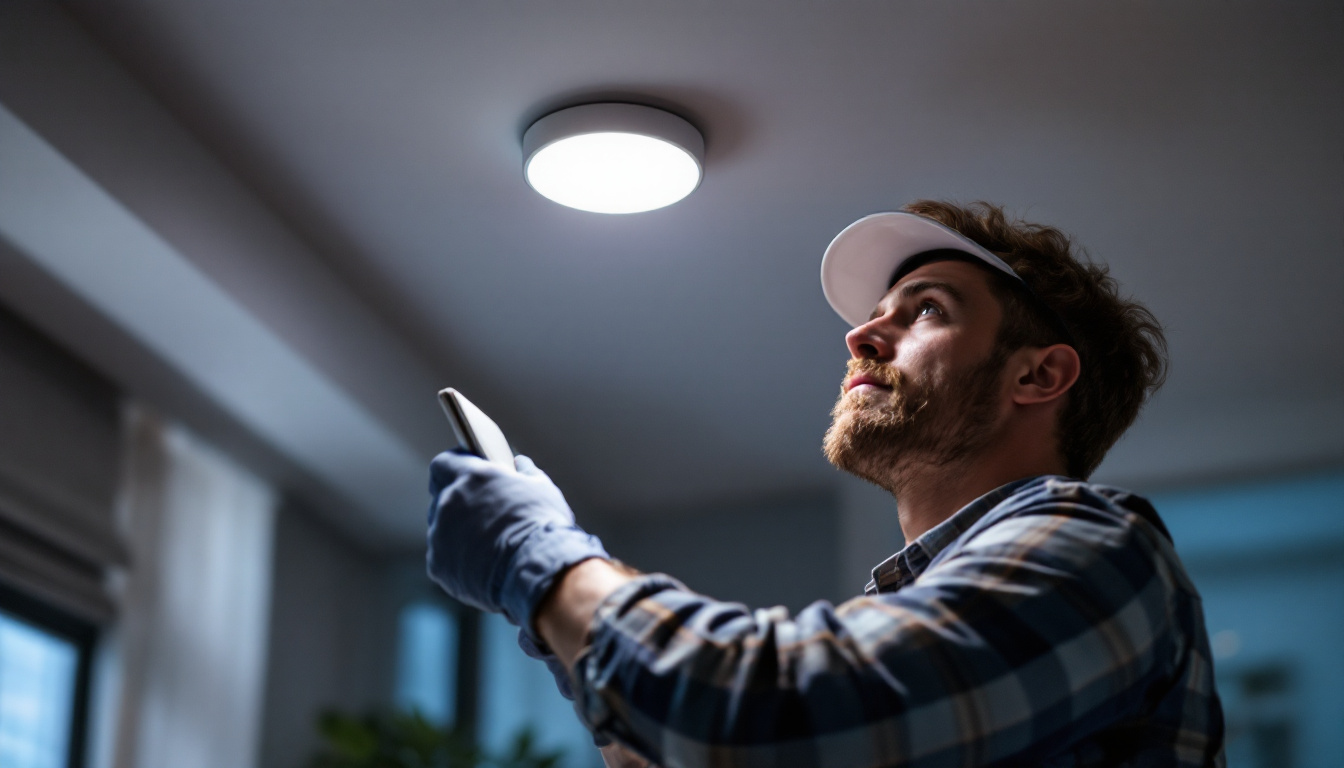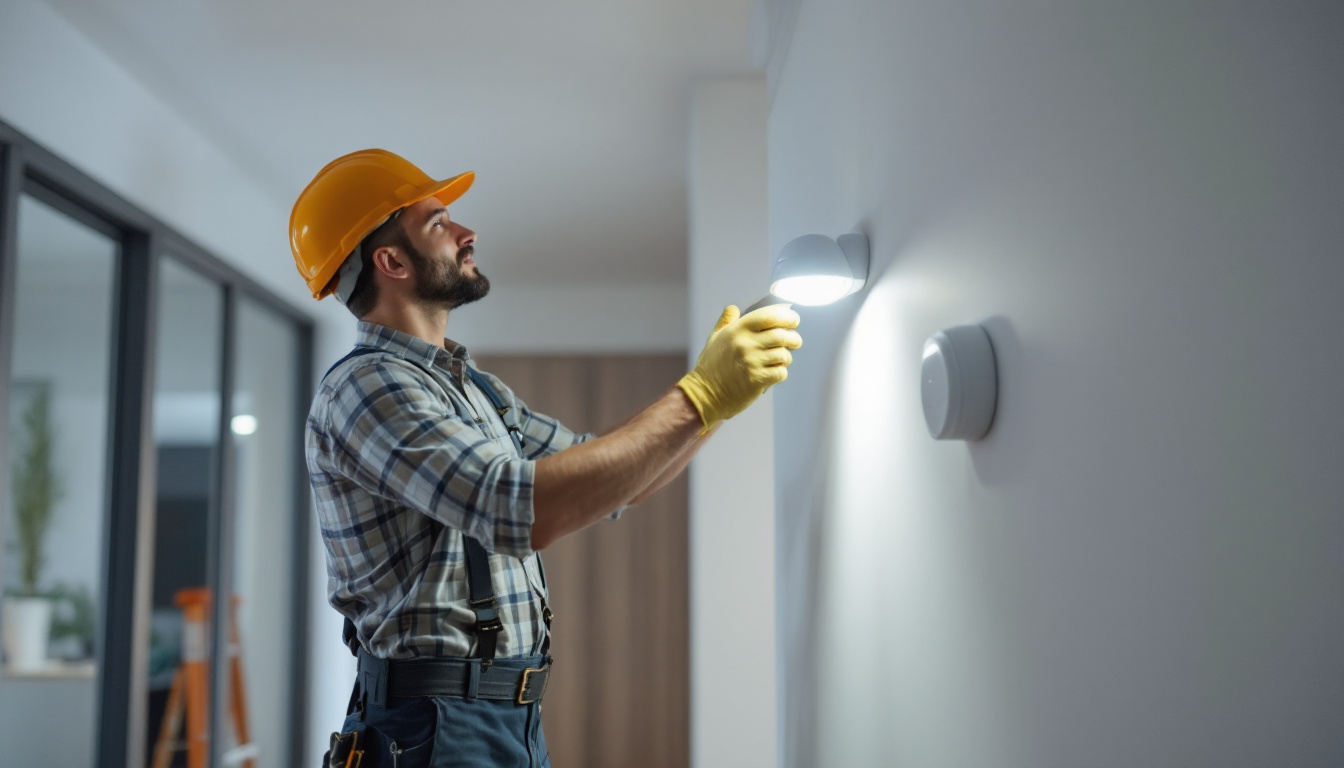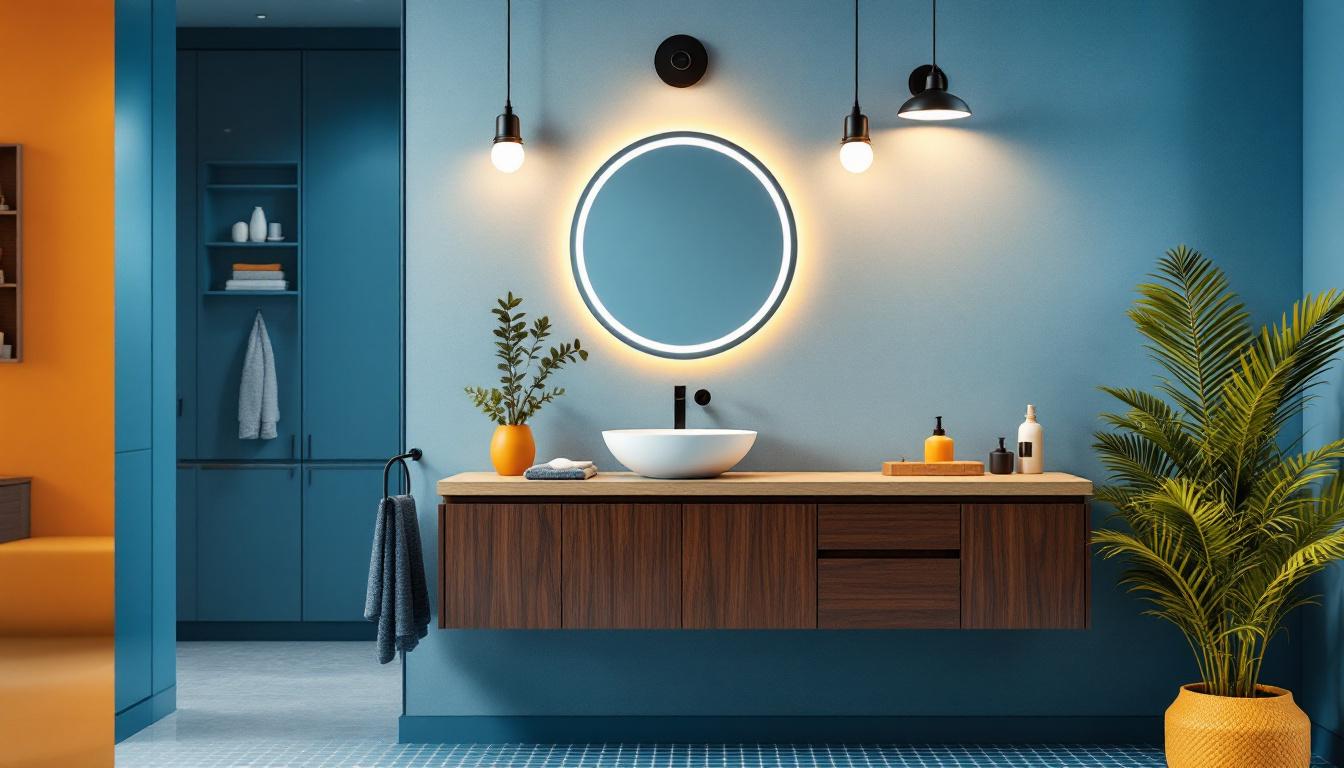
As the demand for energy-efficient and convenient lighting solutions continues to rise, motion sensor recessed lights have become a popular choice among homeowners and businesses alike. For lighting contractors, understanding the intricacies of these fixtures is essential for providing top-notch service and meeting client expectations. This article delves into the key aspects of motion sensor recessed lights, offering insights that every lighting contractor should be aware of.
Motion sensors are devices that detect movement within a specified area, triggering a response, such as turning on a light. The most common types of motion sensors used in recessed lighting are passive infrared (PIR) sensors and ultrasonic sensors. PIR sensors detect changes in infrared radiation, which is emitted by moving objects, while ultrasonic sensors emit sound waves and measure the reflection off moving objects.
When installing motion sensor recessed lights, it’s crucial to understand the operational range and sensitivity of these sensors. The placement of the sensors can significantly affect their performance, as they need a clear line of sight to detect movement effectively. Additionally, contractors should be aware of the potential for false triggers caused by pets, passing vehicles, or even changes in temperature. For instance, a sudden gust of wind might sway tree branches, causing a PIR sensor to activate unnecessarily. Understanding these nuances can help in fine-tuning the sensor settings for optimal performance.
Moreover, the integration of motion sensors into smart home systems has revolutionized how we manage lighting. With advancements in technology, many motion sensors now come equipped with connectivity features that allow them to be controlled remotely via smartphones or home automation systems. This capability not only enhances convenience but also allows users to monitor their home’s security in real time. For example, a homeowner can receive notifications on their phone when motion is detected, providing peace of mind when away from home.
There are several types of motion sensors that can be integrated into recessed lighting systems. Each type has its unique characteristics and applications:
In addition to these primary types, there are also specialized sensors designed for specific environments. For example, microwave motion sensors utilize electromagnetic waves to detect movement, making them particularly effective in environments where temperature fluctuations might affect PIR sensors. These sensors can penetrate through non-metallic objects, allowing them to work effectively in complex layouts like warehouses or multi-room offices. Furthermore, some modern sensors are equipped with adjustable sensitivity settings, enabling users to customize their responsiveness based on the specific needs of their environment.
As the demand for energy-efficient solutions grows, the role of motion sensors in lighting design continues to expand. They not only contribute to energy savings by ensuring lights are only on when needed but also enhance the overall user experience by providing seamless and automatic lighting adjustments. This trend is particularly evident in outdoor lighting systems, where motion sensors can illuminate pathways or driveways only when someone approaches, thereby increasing safety while conserving energy. The ongoing evolution of motion sensor technology promises even more innovative applications in the future, making them an essential consideration in modern lighting design.
One of the most significant advantages of motion sensor recessed lights is their energy efficiency. By automatically turning off when no movement is detected, these lights help reduce energy consumption, leading to lower utility bills. This feature is particularly appealing to environmentally conscious clients who are looking to minimize their carbon footprint.
Moreover, the integration of LED technology in motion sensor recessed lights further enhances energy savings. LED bulbs consume less power and have a longer lifespan compared to traditional incandescent or fluorescent bulbs, making them an excellent choice for contractors aiming to provide sustainable lighting solutions.
Motion sensor recessed lights also serve as a deterrent against potential intruders. By illuminating areas when movement is detected, they create a sense of security for homeowners and businesses. Lighting contractors can emphasize this benefit to clients, particularly in residential neighborhoods or commercial properties that may be at risk for break-ins.
In addition to providing safety, these lights can be strategically placed to highlight pathways, driveways, and entry points, ensuring that clients feel secure in their surroundings. This added layer of security can be a significant selling point for contractors looking to differentiate their services.
Proper planning is essential when installing motion sensor recessed lights. Contractors should assess the space to determine the optimal placement of lights and sensors. Considerations include the size of the area, the height of the ceiling, and potential obstacles that may interfere with sensor detection.
It’s advisable to create a lighting plan that outlines where each fixture will be installed. This plan should take into account the coverage area of each sensor and ensure that there are no blind spots. Additionally, contractors should consider the aesthetic appeal of the lighting layout, ensuring that the fixtures complement the overall design of the space.
When installing motion sensor recessed lights, contractors must also pay attention to the wiring and power supply requirements. Most motion sensor lights operate on standard voltage, but it’s essential to verify the specifications of each fixture before installation. Proper wiring techniques should be employed to ensure safety and compliance with local electrical codes.
In some cases, motion sensors may require a neutral wire for proper operation. Contractors should be prepared to address any wiring challenges that may arise, particularly in older homes where existing wiring may not meet current standards.
Many motion sensor recessed lights come with adjustable sensitivity and timing settings. Contractors should familiarize themselves with these features to provide clients with the best possible experience. Sensitivity settings allow users to customize how easily the sensor detects movement, while timing settings determine how long the light remains on after activation.
It’s essential to guide clients on how to adjust these settings based on their specific needs. For example, a homeowner may prefer a shorter duration for lights in a hallway, while a business owner may want longer illumination times in a parking lot. Educating clients on these options can enhance their satisfaction and lead to positive referrals.
As smart home technology continues to gain popularity, many motion sensor recessed lights can now be integrated with smart home systems. This allows users to control their lighting remotely, set schedules, and receive notifications when motion is detected.
Contractors should be knowledgeable about the various smart home platforms available and how to integrate motion sensor recessed lights with these systems. This expertise can set a contractor apart in a competitive market, appealing to tech-savvy clients looking for modern lighting solutions.
One of the most common issues faced with motion sensor recessed lights is false triggering. This can occur due to pets, passing vehicles, or even changes in temperature. To mitigate this, contractors should recommend sensors with adjustable sensitivity settings and ensure that the placement of the sensors minimizes the likelihood of false triggers.
Additionally, educating clients about the factors that can cause false triggers can help set realistic expectations. Providing tips on how to adjust the settings or reposition the sensors can lead to a more satisfactory experience for the end user.
Installation of motion sensor recessed lights can sometimes present challenges, particularly in older homes with outdated wiring or unique architectural features. Contractors should be prepared to troubleshoot these issues and offer creative solutions.
For example, in homes without a neutral wire, contractors may need to explore alternative wiring methods or recommend fixtures that do not require a neutral connection. Being adaptable and resourceful in these situations can enhance a contractor’s reputation and foster client trust.
The lighting industry is continually evolving, with advancements in technology paving the way for more sophisticated motion sensor solutions. Innovations such as improved sensor accuracy, energy harvesting capabilities, and integration with artificial intelligence are on the horizon.
Contractors should stay informed about these trends to remain competitive in the market. Understanding emerging technologies and their applications can provide valuable insights that can be shared with clients, positioning contractors as knowledgeable experts in the field.
As sustainability becomes a top priority for many consumers, the demand for energy-efficient lighting solutions is expected to grow. Motion sensor recessed lights, particularly those utilizing LED technology, will likely see increased popularity as more clients seek to reduce their energy consumption.
Contractors should be prepared to highlight the energy-saving benefits of motion sensor recessed lights and how they align with clients’ sustainability goals. This focus on energy efficiency can not only enhance customer satisfaction but also contribute to a more sustainable future.
Motion sensor recessed lights represent a significant advancement in lighting technology, offering energy efficiency, enhanced security, and convenience. For lighting contractors, understanding the intricacies of these fixtures is essential for providing exceptional service and meeting the evolving needs of clients.
By staying informed about motion sensor technology, installation best practices, and emerging trends, contractors can position themselves as leaders in the industry. Emphasizing the benefits of motion sensor recessed lights and addressing common challenges will not only enhance client satisfaction but also contribute to a more sustainable and secure environment.
As the lighting landscape continues to evolve, embracing the potential of motion sensor recessed lights will ensure that contractors remain relevant and competitive in a rapidly changing market.
Ready to elevate your lighting projects with the latest motion sensor recessed lights? At LumenWholesale, we provide lighting contractors like you with the highest quality, spec-grade lighting products at prices that can’t be beaten. Say goodbye to local distributor markups and hello to our extensive, industry-standard selection. With free shipping on bulk orders, you can trust that you’re getting premium lighting solutions at the best value, without any hidden fees. Make the smart choice for your business and visit LumenWholesale today for a seamless blend of quality, affordability, and convenience.

Discover how LED lights kits are revolutionizing the lighting industry and becoming essential tools for contractors.

Discover how light switch sensors are revolutionizing the lighting industry, offering contractors enhanced efficiency, energy savings, and seamless integration for modern projects.

Discover why lighting contractors should prioritize motion sensor indoor lights in their projects.

Discover the essential insights lighting contractors need to master vanity lighting projects.